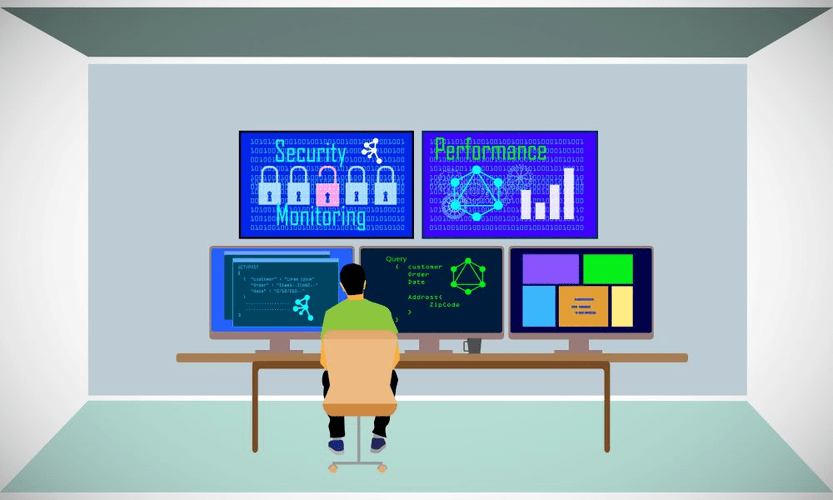Beyond merely investing in AI and machine learning, leaders must know how to use these technologies to deliver value. Traditional surveys force employees to fit their answer into a multiple-choice box, even when it doesn’t. Using the power of artificial intelligence and NLU technology, companies can create surveys full of open-ended questions. The AI model doesn’t just read each answer literally, but works to analyze the text as a whole. NLU is a subdiscipline of NLP, and refers specifically to identifying the meaning of whatever speech or text is being processed.

First of all, they both deal with the relationship between a natural language and artificial intelligence. They both attempt to make sense of unstructured data, like language, as opposed to structured data like statistics, actions, etc. Today’s voice-first technologies are built with NLU, which is artificial intelligence centered on recognizing patterns and meaning within human language.
Solution Providers
In conclusion, for NLU to be effective, it must address the numerous challenges posed by natural language inputs. Addressing lexical, syntax, and referential ambiguities, and understanding the unique features of different languages, are necessary for efficient NLU systems. Semantic analysis applies computer algorithms to text, attempting to understand the meaning of words in their natural context, instead of relying on rules-based approaches. The grammatical correctness/incorrectness of a phrase doesn’t necessarily correlate with the validity of a phrase.
Systems that are both very broad and very deep are beyond the current state of the art. NLU enables a computer to understand human languages, even the sentences that hint towards sarcasm can be understood by Natural Language Understanding (NLU). Artificial intelligence (AI) assistants like Siri and Alexa use natural language processing (NLP) to decipher the queries we ask them.
Natural Language Understanding systems in action
This helps with tasks such as sentiment analysis, where the system can detect the emotional tone of a text. It involves techniques that analyze and interpret text data using tools such as statistical models and natural language processing (NLP). Sentiment analysis is the process of determining the emotional tone or opinions expressed in a piece of text, which can be useful in understanding the context or intent behind the words.
This type of RNN is used in deep learning where a system needs to learn from experience. LSTM networks are commonly used in NLP tasks because they can learn the context required for processing sequences of data. To learn long-term dependencies, LSTM networks use a gating mechanism to limit the number of previous steps that can affect the current step.
Article # 1 : Question-Answering Over Documents via LLM – An Overview
When a computer understands what you mean to say without you having to ask it in one specific way, using your voice starts to feel like having an actual conversation. It is the technology that is used by machines to understand, analyze, manipulate, and interpret human languages. For example, after training, the machine can identify “help me recommend a nearby restaurant”, which is not an expression of the intention of “booking a ticket”. Accurately translating text or speech from one language to another is one of the toughest challenges of natural language processing and natural language understanding. According to Zendesk, tech companies receive more than 2,600 customer support inquiries per month. Using NLU technology, you can sort unstructured data (email, social media, live chat, etc.) by topic, sentiment, and urgency (among others).
Machine learning is at the core of natural language understanding (NLU) systems. It allows computers to “learn” from large data sets and improve their performance over time. Machine learning nlu artificial intelligence algorithms use statistical methods to process data, recognize patterns, and make predictions. In NLU, they are used to identify words or phrases in a given text and assign meaning to them.
Choosing the right language model for your NLP use case
In particular, sentiment analysis enables brands to monitor their customer feedback more closely, allowing them to cluster positive and negative social media comments and track net promoter scores. By reviewing comments with negative sentiment, companies are able to identify and address potential problem areas within their products or services more quickly. While natural language processing (NLP), natural language understanding (NLU), and natural language generation (NLG) are all related topics, they are distinct ones. Given how they intersect, they are commonly confused within conversation, but in this post, we’ll define each term individually and summarize their differences to clarify any ambiguities. Natural language understanding (NLU) is the process of deciphering written and spoken language, while natural language generation (NLG) produces new languages using automated means.
- NLU focuses on the “semantics” of the language, it can extract the real meaning from any given piece of text.
- When a computer understands what you mean to say without you having to ask it in one specific way, using your voice starts to feel like having an actual conversation.
- While NLP is concerned with how computers are programmed to process language and facilitate “natural” back-and-forth communication between computers and humans, NLU is focused on a machine’s ability to understand that human language.
- While NLU is a subset of AI, it is certainly not something that should be used interchangeably with the latter term, as AI in a broader sense is able to do much more than merely understand and contextualize natural language.
- In NLU, they are used to identify words or phrases in a given text and assign meaning to them.
- Let’s take a look at the companies that are exploring the advantages of Natural Language Understanding.
- Natural Language Understanding is also making things like Machine Translation possible.
Sentiments must be extracted, identified, and resolved, and semantic meanings are to be derived within a context and are used for identifying intents. But with natural language processing and machine learning, this is changing fast. There are many downstream NLP tasks relevant to NLU, such as named entity recognition, part-of-speech tagging, and semantic analysis. These tasks help NLU models identify key components of a sentence, including the entities, verbs, and relationships between them. Natural Language Understanding (NLU) refers to the ability of a machine to interpret and generate human language.
NLP vs. NLU: What is the use of them?
This gives your employees the freedom to tell you what they’re happy with — and what they’re not. The NLU tech can analyze this data (no matter how many responses you get) and present it to you in a comprehensive way. With this information, companies can address common issues and identify problems like employee burnout before they become critical. The platform is able to understand the request of the user, a Travel Insurance Package to Berlin from Nov 28 — Dec 9.

Customer reviews are analyzed via Sentiment Analysis and post analysis the data is delivered to the sales and marketing team of respective companies. With the help of NLG, businesses may develop conversational narratives that anybody in the company can use. NLG is typically used in business intelligence dashboards, automated content production, and quick data analysis, which can greatly benefit professionals in fields like marketing, HR, sales, and IT. Natural language understanding (NLU) and natural language generating (NLG) are the specific names for these parts (NLG). The purpose of this article is to provide a brief overview of NLP, NLU, and NLG and to discuss the promising future of NLP.
Why is Conversation Intelligence Important?
RNNs can be used to transfer information from one system to another, such as translating sentences written in one language to another. RNNs are also used to identify patterns in data which can help in identifying images. An RNN can be trained to recognize different objects in an image or to identify the various parts of speech in a sentence. Research about NLG often focuses on building computer programs that provide data points with context.
